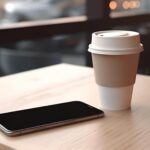Embroidery digitizing is a meticulous craft that demands precision and expertise. As businesses seek to enhance their branding through embroidered apparel, the demand for high-quality digitized designs is rising. However, only some enterprises possess the in-house capabilities to execute this task effectively. It is where engaging in outsourced embroidery digitizing proves to be a highly beneficial solution. By entrusting this intricate process to professionals, businesses can focus on their core activities while ensuring top-notch results. In this article, we’ll delve into the dos and don’ts of outsourcing embroidery digitizing, equipping you with the knowledge to make informed decisions and optimise your workflow.
-
Understanding the Benefits of Outsourcing
Outsource embroidery digitizing offers myriad benefits, making it an attractive option for businesses of all sizes. Firstly, it allows access to specialised expertise. Professional digitizers possess extensive experience and knowledge in creating intricate designs optimised for embroidery machines. By leveraging their skills, businesses can ensure superior quality and attention to detail in their embroidered products.
Secondly, outsourcing digitizing can significantly reduce costs. Setting up an in-house digitizing department requires substantial software, equipment, and training investment. By outsourcing, businesses can avoid these upfront expenses and opt for a cost-effective pay-per-design model.
Furthermore, outsourcing digitizing enables flexibility and scalability. Whether you need a single design or a large batch, outsourcing providers can easily accommodate varying workloads, allowing you to adapt to fluctuations in demand without hassle.
-
Choosing the Right Outsourcing Partner
Selecting the right outsourcing partner is crucial for the success of your embroidery digitizing endeavours. Here are some key factors to consider:
Do: Research extensively before deciding. Look for providers with a proven track record of delivering high-quality digitized designs within stipulated timelines.
Don’t: Base your decision solely on price. While cost-effectiveness is essential, prioritise quality and reliability. Opting for the cheapest provider may result in subpar designs and delays, ultimately costing you more in the long run.
Do: Assess the provider’s portfolio and customer reviews. Look for diversity in their past projects and positive feedback from satisfied clients. It will give you insight into their capabilities and customer satisfaction levels.
Don’t: Overlook communication and customer support. A responsive and communicative outsourcing partner can address your concerns promptly and ensure a smooth collaboration process. Ineffective communication can result in misinterpretations and project delivery timelines being extended.
-
Providing Clear Instructions
Clear communication is paramount when outsourcing embroidery digitizing. To ensure your requirements are met accurately, provide detailed instructions to the digitizing provider. Here’s how to do it effectively:
Do: Provide high-quality artwork or images for reference. The better the quality of the input file, the easier it is for the digitizer to create a precise design. Include information about thread colours, dimensions, and any specific design elements you want to highlight.
Don’t: Assume that the digitizer will only understand your vision with proper guidance. Be explicit about your expectations regarding stitch types, density, and any other preferences you may have. Clear instructions minimise the risk of revisions and ensure that the final design aligns with your vision.
Do: Establish open communication channels for feedback and revisions. Encourage the digitizing provider to seek clarification if they have doubts about your instructions. Regular updates and feedback loops facilitate a collaborative approach and help resolve any issues promptly.
Don’t: Micromanage the digitizing process. While it’s essential to provide guidance, avoid excessive meddling that may hinder the digitizer’s creativity and expertise. Place confidence in their abilities and grant them the autonomy to implement the design proficiently.
-
Managing Expectations and Quality Assurance
Effective management of expectations and quality assurance is essential to the success of outsourced embroidery digitizing projects. Here’s how to ensure optimal outcomes:
Do: Set realistic deadlines and milestones. Understand the time required for digitizing complex designs and factor in buffer time for revisions and adjustments. Communicate your timeline expectations clearly to the outsourcing partner and establish mutually agreed-upon deadlines.
Don’t: Expect perfection on the first attempt. Transforming complex designs into digital format frequently necessitates multiple iterations and meticulous adjustments to attain the intended outcome. Be prepared to provide constructive feedback and request revisions until you are satisfied with the result.
Do: Implement quality control measures. Inspect the digitized designs thoroughly upon receipt, paying attention to details such as stitch consistency, density, and alignment. Provide prompt feedback to the digitizing provider, highlighting areas that require improvement.
Don’t: Accept subpar quality to meet deadlines. While timeliness is essential, never compromise on the quality of digitized designs. If you encounter persistent quality issues, address them with the outsourcing partner and seek resolution to ensure consistent quality standards.
Conclusion
Outsourcing embroidery digitizing can streamline your workflow, enhance product quality, and save costs. By adhering to the dos and don’ts outlined in this guide, you can maximise the benefits of outsourcing while mitigating potential pitfalls. With the right approach, outsourcing embroidery digitizing can be a game-changer for your business, allowing you to deliver impeccable embroidered products that leave a lasting impression.



